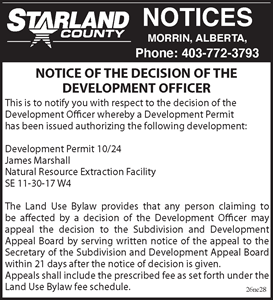
In wartime, it’s all hands on deck. This is true for the men and women on the front and on the home front.
That was the case for the coal industry in Canada and in the valley. Coal powered the war effort and it was needed at home and abroad.
During World War II, the country was mobilized and young men were joining up quickly to battle on the front. This led to a shortage of men to work in the mines. Not only was there a shortage, but the men who were left to work in the mine were aging.
A former driver, Bob Moffatt, tells the Mail, “Everybody was joining up, they joined up by the thousands. Somebody said we need miners, and we need to keep the furnaces going. I had one uncle who was sent back. He was in tank training, and they found out he was a miner and he was sent back.”
This struggle on the home front led to one soldier in Drumheller having the tragic distinction of appearing on both the Drumheller Miners Memorial and the Cenotaph.
Private George Hill Brown was born in New Cumnock, Ayrshire, Scotland, and resided in Canada for 23 years. He enlisted in Bienfait, Saskatchewan. Because of the strategic significance of the coal industry, Brown spent much of his time on active service “on mining leave without pay.”
“I guess Mr. Brown was just about to board the ship when they nailed him down in Halifax and sent him home. His mother was happier than hell he wasn’t going to get shot,” said Moffatt.
The government worked with the mine owners and unions to help stabilize the industry and keep the mines running. Three years into the war, the Department of Labour modified its military recruitment policies to limit miners from entering the armed forces. According to history.alberta.ca, “In June 1943, further amendments were made to the National Selective Service Civilian Regulations so that no former or current coal miner would be allowed to work in any occupation other than that of a coal miner, and no employer could retain the employment of a former coal miner without the permission of a selective service officer.”
According to The Drumheller Mail, on January 4, 1944, George Brown was injured. He was working for the Regal Coal Company at the Atlas Coal mine as a driver. While bringing out a load of coal, he slipped and rolled underneath a car and fractured his pelvis and internal organs. He died in the Wayne Hospital on January 6 due to sustained injuries. He had been in East Coulee for about eight months.
What made the story even more tragic, his brother, Bertram Brown, died of nearly identical injuries in October 1943 while working in the Murray Mine.
The Saskatchewan government names geographical locations in honour of fallen service men and Brown Peninsula in North East Saskatchewan is named in his honour.
Local historian Reg Bennet has done a lot of work researching the honour roll in Drumheller and came across Brown in his work. In 2012, he was able to have the Cenotaph rededicated with four names, including Brown who was not previously included on the honour roll.




























